I tried Lenovo Legion Go and gamers will love its Nintendo-Switch-dwarfing display
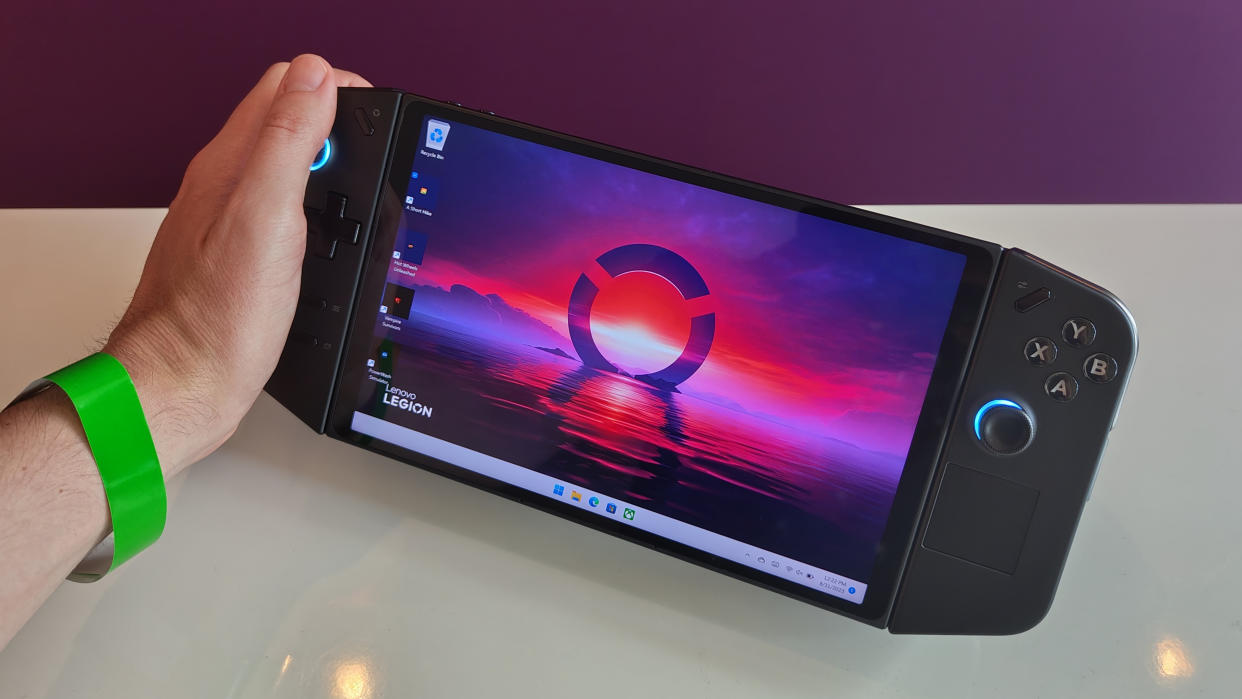
This week I've been rattling around Berlin attending IFA, best known as being Europe's premier consumer technology show. But one of the most interesting things I've seen wasn't at IFA at all: behind closed doors in a city-centre hotel, Lenovo gave me half an hour to play around with its latest handheld gaming system, the Legion Go.
As you can see from my hands-on photos on this very page, the Lenovo Legion Go isn't messing about when it comes to screen size. This handheld – which isn't a million miles away from small keyboardless laptop with detachable side controllers – features an 8.8-inch LCD display, which dwarfs the Nintendo Switch OLED's 7-inch panel by comparison (someone snuck one into the briefing, as you can see below).
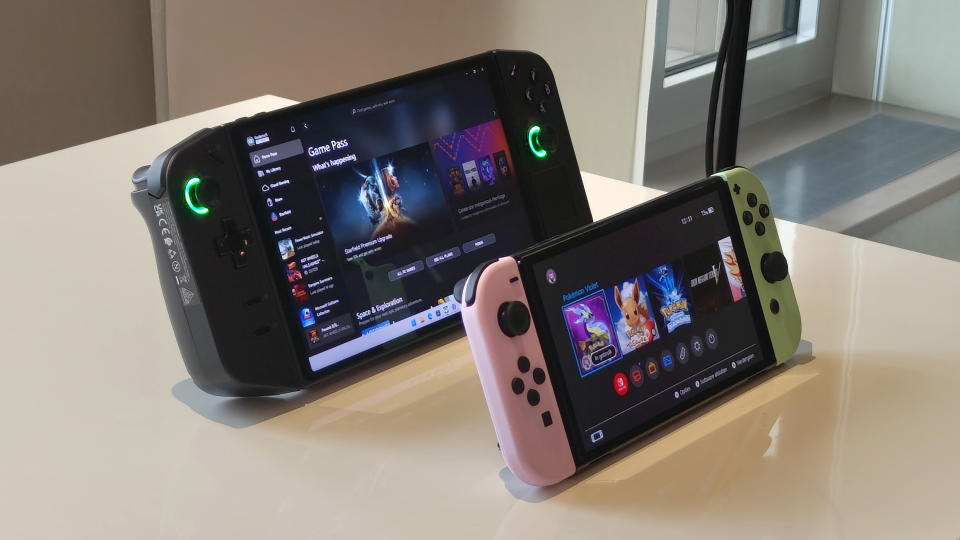
Not that most gamers looking to buy a Windows-based gaming handheld such as this are really going to compare it to the Nintendo Switch. The Legion Go is far more comparable to the Asus ROG Ally, which also runs Windows, or Valve's Linux-based Steam Deck, both of which have had their ups and downs with public reception. I've liked both models, but each has their share of issues that Lenovo is looking to outshine.
The screen is one clear way in which it's doing that. The IPS LCD panel has a 144Hz refresh rate, so has the potential to be super-smooth for games that can deliver high frame rates, and its QHD+ resolution, which spans 2560 by 1600 pixels, is really high quality for this scale. I'm a little on the fence as to whether that will be too adverse to battery life, though, but after such a short period of testing out the Legion Go that's an unknown at this stage.
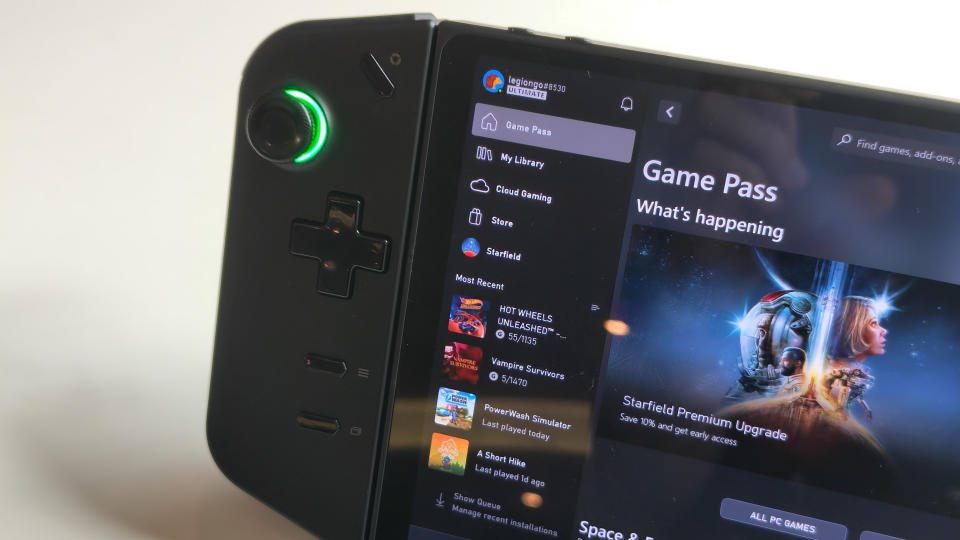
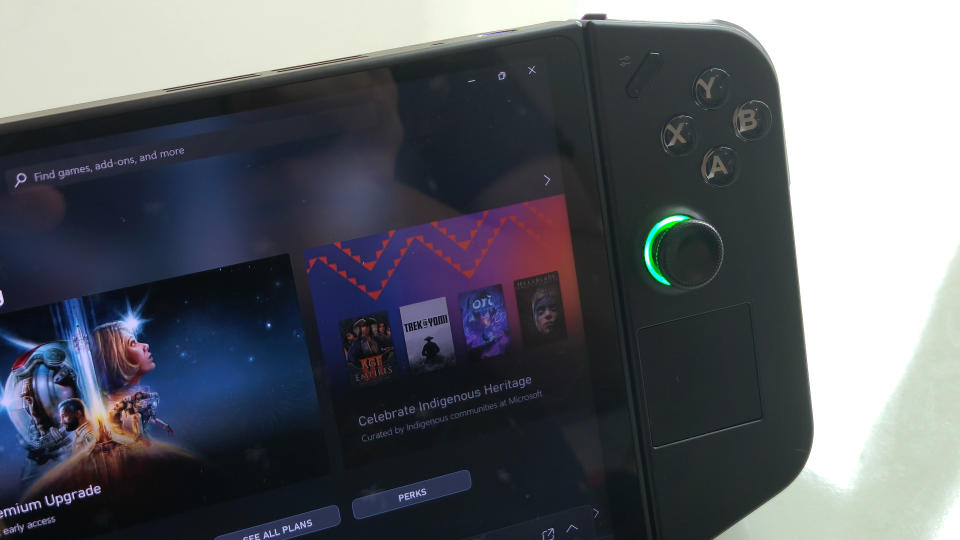
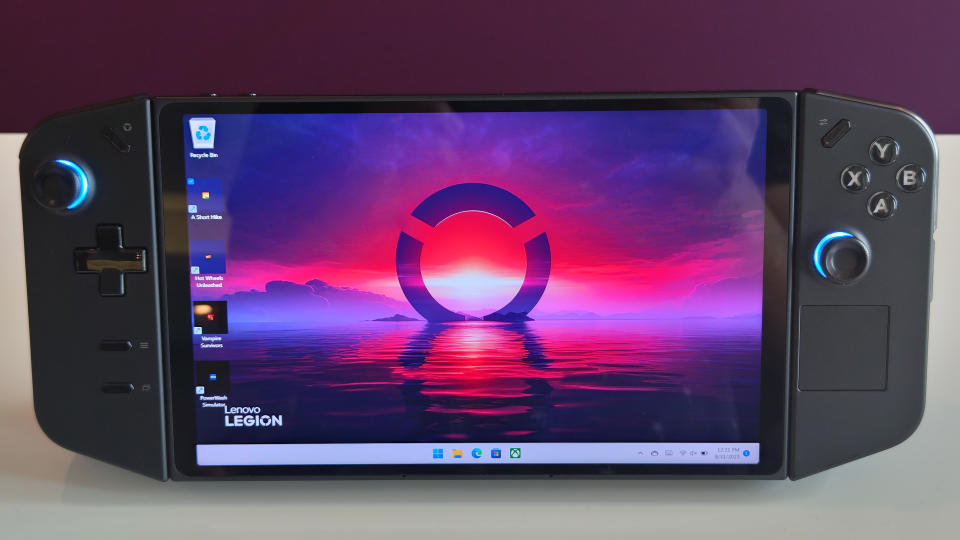
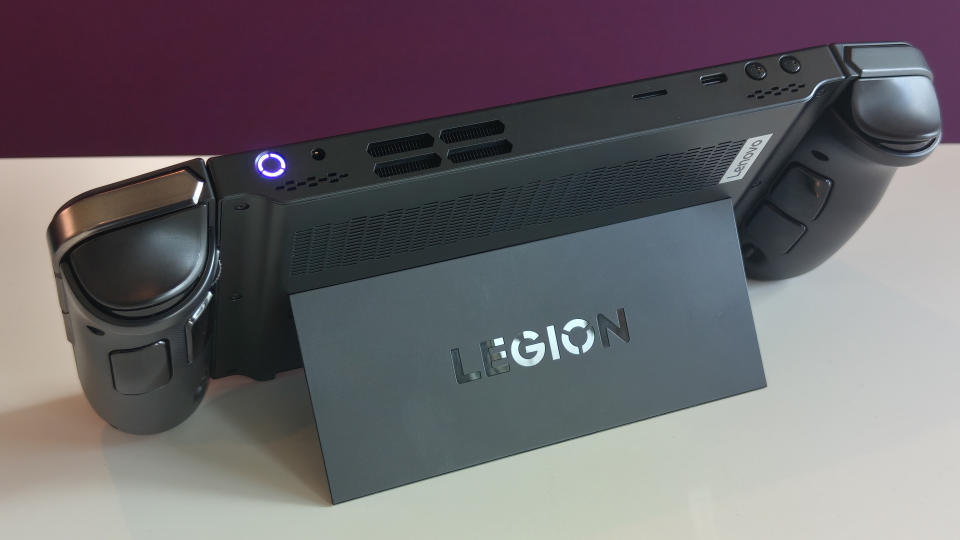
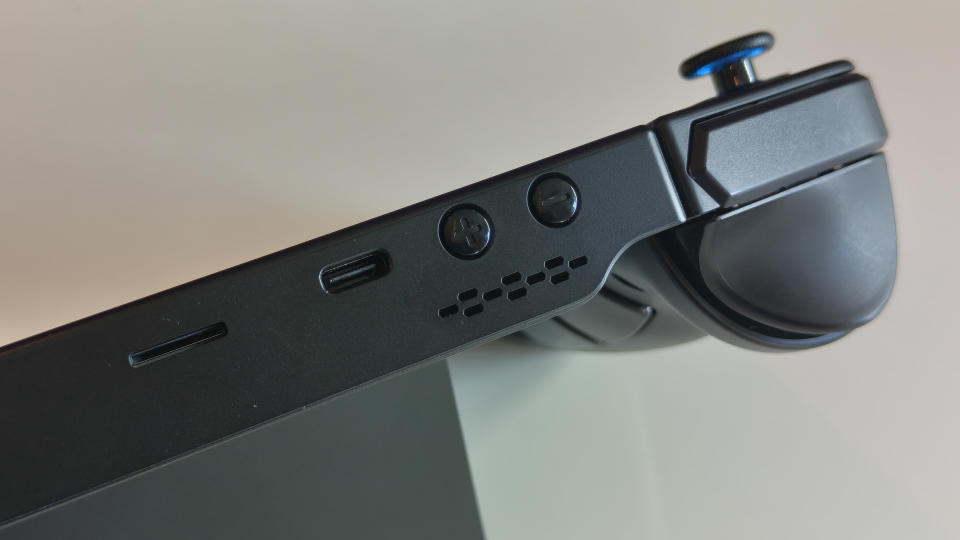
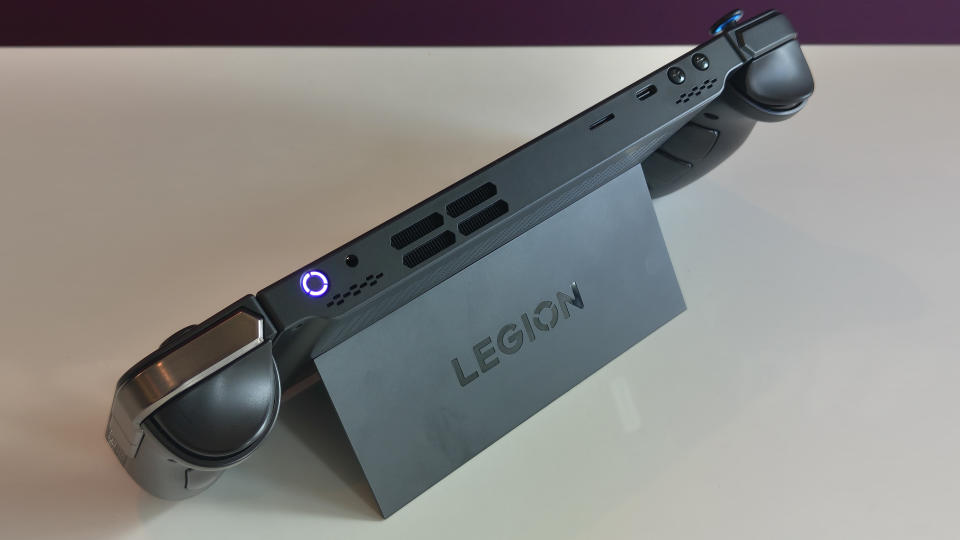

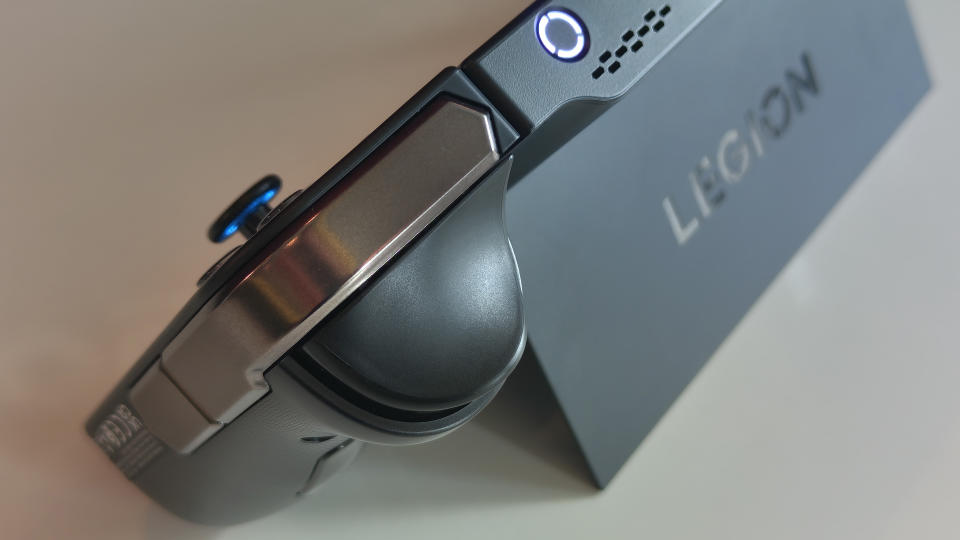
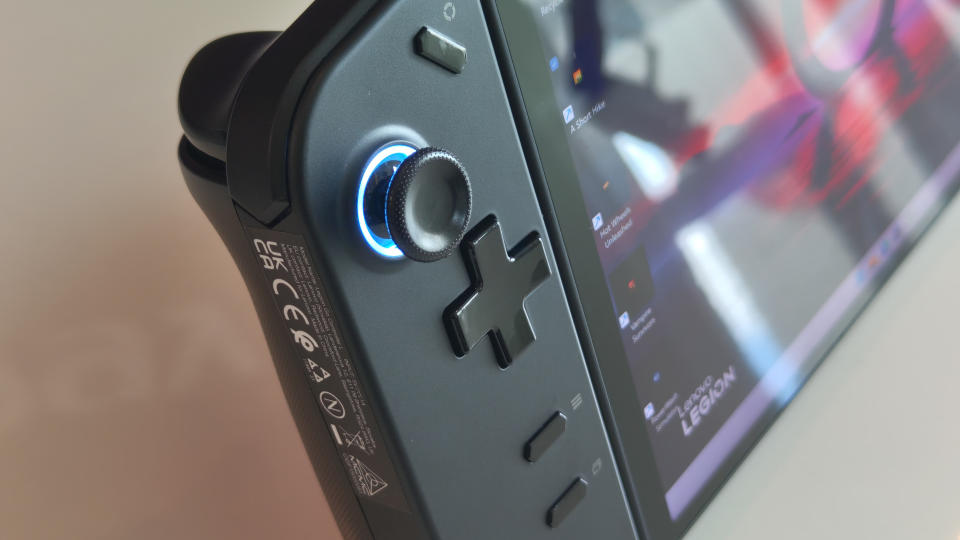
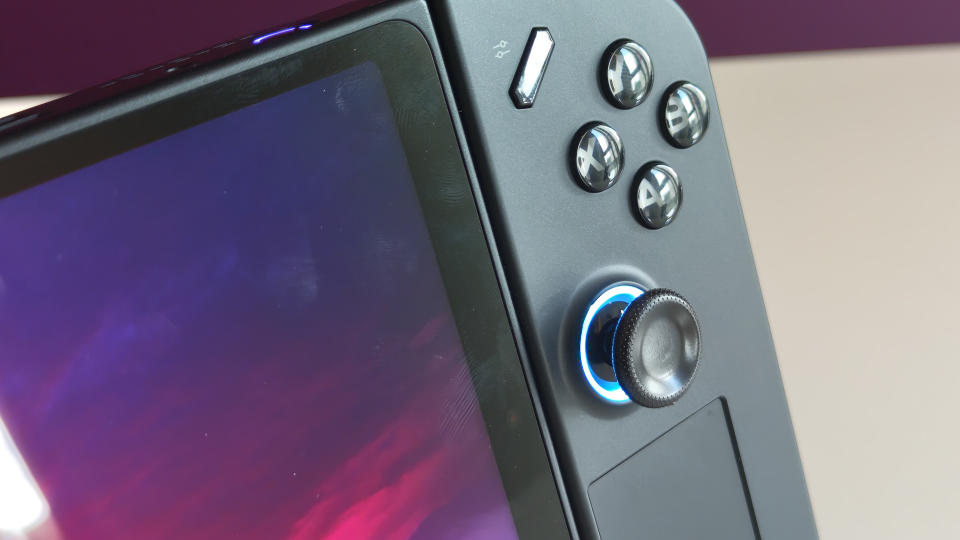
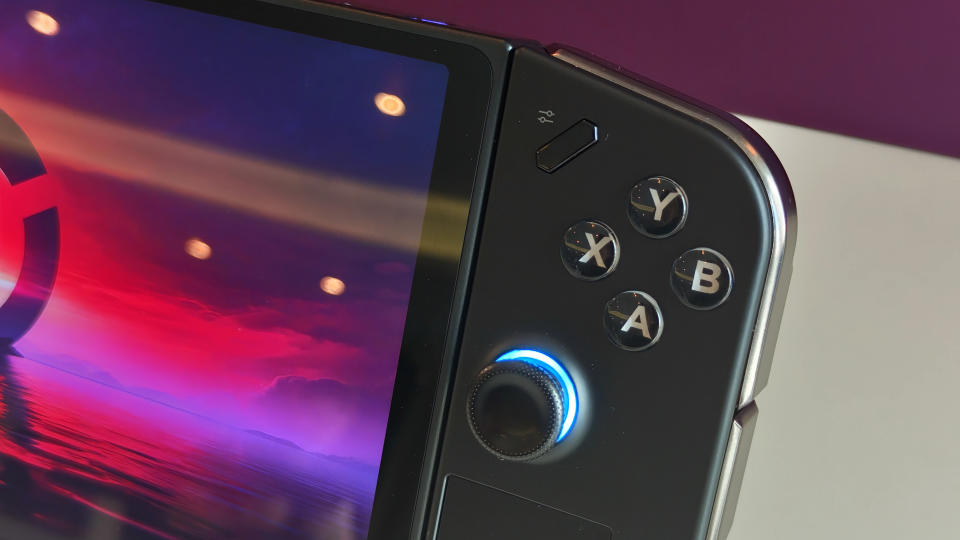
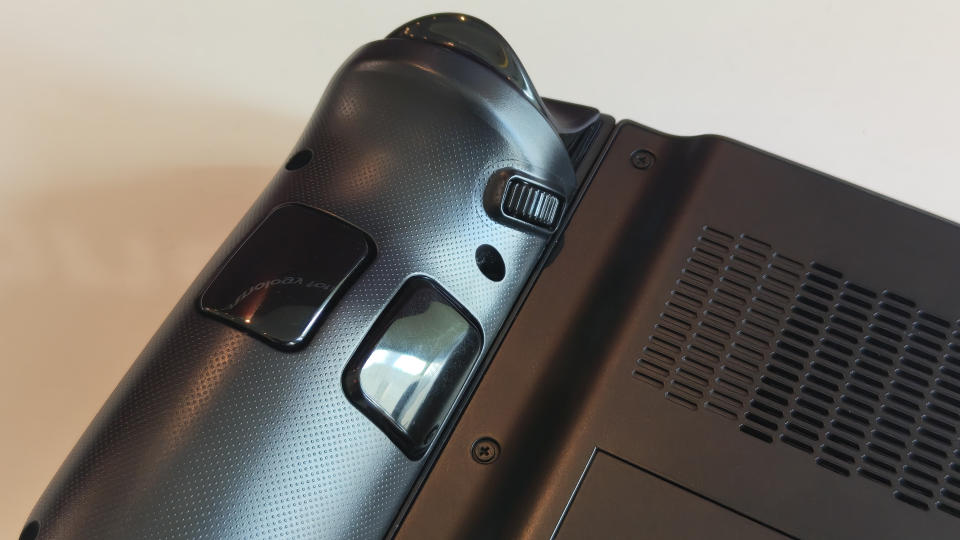
Display: 8.8in IPS LCD, 144Hz, QHD+ (2560 x 1600), 500 nits
Processor: AMD Ryzen Z1 Extreme, 16GB RAM (LPDDRX5)
Weight: 854g / Dimensions: 299 x 131 x 41mm
Battery: 49.2Whr, dual USB-C charging ports
Storage: 512GB/1TB, microSD expansion
My first thoughts when picking up the Legion Go were "this is kind of massive", but after letting it sit in my hands for some time, actually everything fits into place really nicely. There aren't unduly small buttons or triggers to be found here and it's a natural fit.
The controls are extensive too: on the right-hand side is a thumbstick, but also a separate pad (like a mini mousepad controller), plus four Xbox-mapped buttons to make those Gamepass sessions feel natural. The left-hand side has the other thumbstick, plus a traditional d-pad, and a trio of menu/control buttons. Both sides have a trio of rear triggers, too, so there's lots of detailed control that can be mapped out.

Of particular interest, though, is the built-in kickstand. This is where things do get a little Switch-like, as the stand is akin to the one found on Nintendo's OLED model, in that it's infinitely adjustable and feels really rigid when you've selected its position. As both the controllers can be detached (also like the Switch), the stand will be useful for different control types.
One of which is really interesting: inside the Legion Go's included carry case is an additional plastic 'puck' which can be used to slot a controller into to create a vertical mouse. This pre-release version didn't have magnetic connectivity, but that'll be made part of the package for the final release. There should also be DPI adjustability according to a Lenovo spokesperson, although I've not seen where that'll be controlled in software. Still, I think hardcore gamers will love this PC-like feature.
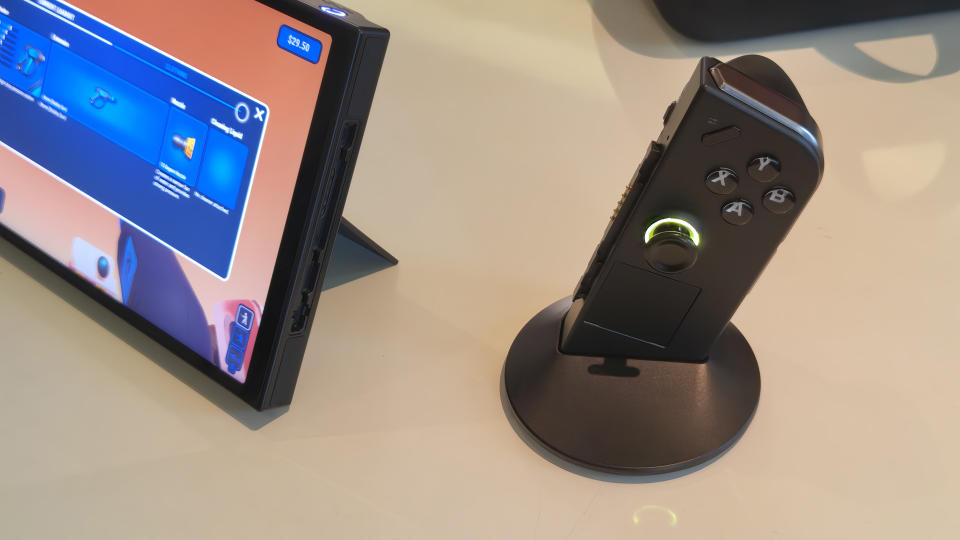
When it comes to raw power the Legion Go is largely level-pegged against its main competition too: there's an AMD Ryzen Z1 Extreme inside, paired with 16GB RAM, and utilising AMD's Radeon 700M series graphics. That's why this machine needs some thickness to accommodate its cooling, no doubt, which is a fair compromise in my book.
I wasn't able to dig deep into a Gamepass library, though, and many of the pre-loaded games on the handheld were a little more primitive (Hot Wheels Unleashed, A Short Hike, PowerWash Simulator, Vampire Survivors), so that'll be the true test in how graphically proficient this machine can be. That it's an easy access port to Xbox Game Pass, however, has obvious appeal. I'd take that over Steam Deck's library personally.

But here's the thing that I think will massively appeal: the Lenovo Legion Go's asking price starts at €699, or there's a €799 option for the 1TB storage variant – with no other difference in specification. That's really competitive against the Asus ROG Ally and, in my opinion, you needn't really spend the extra because there's a microSD card slot for excesses that you don't need on a speedy SSD drive.
All in all, then, while the Lenovo Legion Go is a rather large-scale handheld, it's design fits the brief, it's screen outshines its immediate competition, it's got the power and an attractive price point too – and I think it's 'XL' vision will appeal to a certain type of gamer. I look forward to testing it more and really putting that AMD processor to task and seeing how well battery life will last (the GPU runs max 25W, so worst case should be two hours of life per charge).

